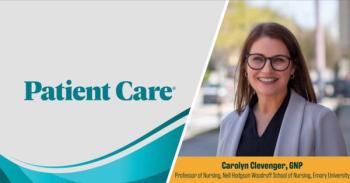
New Findings Underscore Importance of Mental Health Screening in Adolescents Receiving Obesity Treatment
In a study of adolescents with obesity, symptoms of depression and eating disorders decreased over the course of a 52-week intensive behavioral intervention.
Results of a new case-control study of adolescents with obesity showed self-reported symptoms of depression and eating disorders decreased over the course of a 52-week intensive behavioral intervention along with reductions in body mass index (BMI), suggesting weight loss can improve both psychological and psychosocial health.
Specifically, researchers reported reductions in symptoms of depression, eating disorders, and
Despite these reductions in symptoms, 12.1% of participants (n=17) required additional support or referral for
“Results suggest that obesity treatment interventions may have a dual role of improving physiological and psychosocial health; screening and monitoring for depression and disordered eating are important to facilitate early intervention,” first author Hiba Jebeile, PhD, of the Institute of Endocrinology and Diabetes at the Children’s Hospital at Westmead in Australia, and colleagues wrote in JAMA Pediatrics.
Background, methods
Symptoms of depression and eating disorders increase during adolescence, and children with obesity face a higher risk of developing these symptoms than their peers without obesity, according to investigators. During the COVID-19 pandemic, depression and disordered eating were exacerbated in adolescents and the prevalence of obesity increased. In the US, for example, a
Researchers noted that adolescents with obesity and disordered eating are likely to have worse physical and psychological health issues, so “it is important to understand the proportion of adolescents with obesity who are seeking treatment and experiencing these symptoms and effects of obesity treatment.”
“However, most included studies involved moderate dietary interventions, providing nutrition education alone or with a moderate continuous energy restriction,” Jebeile and colleagues wrote. “These findings cannot be extrapolated to more prescriptive dietary interventions or higher levels of energy restriction (eg, [VLEDs] or [IER]), as more restrictive dieting practices have been associated with disordered eating in adolescent community samples.”
They continued: “These approaches are recommended for use in adolescents with severe obesity and/or concurrent complications, warranting further investigation.”
Jebeile and colleagues conducted the Fast Track to Health trial to examine changes in self-reported symptoms of depression, eating disorders, and binge eating among adolescents aged 13 to 17 years with obesity and 1 or more cardiometabolic conditions (eg, insulin resistance, hypertension). For the purpose of the study, obesity was defined as the adult equivalent BMI of ≥30 kg/m2.
The study was conducted from 2018 to 2023 at children’s hospitals in Australia. The trial included the following 3 phases, with the first being from baseline to week 4, then weeks 5 to 16, and weeks 17 to 52. During the first phase, participants received VLEDs consisting of approximately 800 kcal per day, then they transitioned to IER or CER during phase 2, and then either continued intervention and/or maintenance with reduced support during phase 3.
The IER intervention consisted of 3 energy-restricted days per week (approximately 600-700 kcal/day), and 4 days per week of healthy eating without energy restriction. The CER intervention involved tailored energy prescription based on age (eg, those aged 13-14 years received 1430-1670 kcal/day and those aged 15-17 years received 1670-1900 kcal/day), according to researchers.
Investigators screened participants for depression and eating disorders using self-reported questionnaires at baseline and week 4, 16, and 52. Symptoms of depression were measured using the Center for Epidemiologic Studies Depression Scale–Revised 10-Item Version for Adolescents (CESDR-10; scores 0-30), where a score of ≥8 indicates “subthreshold symptoms of depression, with a possible, probable, and major depressive episode,” Jebeile et al wrote. Eating disorder symptoms were evaluated using the Eating Disorder Examination Questionnaire (EDE-Q; scores 0-6), where a score of 2.7 indicates risk. Binge eating symptoms were measured via the Binge-Eating Scale (BES; scores 0-46), with a score of ≥27 indicates severe binge eating, according to the study.
Findings
Among the cohort, the mean age was 14.8 years and 50.4% were boys. At baseline, more than 50% of participants reported some symptoms of depression and/or eating disorders; 21% reported mild, moderate, or severe binge eating, investigators noted.
Also at baseline, researchers observed median scores of 9.00 on CESDR-10, 2.28 on EDE-Q, and 11.00 on BES, with no difference between groups.
At week 52, there were no differences between groups for change in CESDR-10 (mean difference 0.75, 95% CI −1.86 to 3.37), EDE-Q (mean difference 0.02, 95% CI −0.41 to 0.45), or BES (mean difference −2.91, 95% CI −5.87 to 0.05), according to the results.
The within-group decreases at week 4 were maintained at week 52 for CESDR-10 (IER, −2.70, 95% CI −4.95 to −0.45; CER, −3.87, 95% CI −5.98 to −1.77) and EDE-Q (IER, −0.63, 95% CI −0.97 to −0.26; CER, −0.56, 95% CI −0.89 to −0.22), “indicating reduced symptoms of depression and eating disorders,” investigators stated. They added that within-group reductions on the BES were maintained in the IER group at week 52 (−3.72, 95% CI −6.20 to −1.24), but not CER (−0.38, 95% CI −2.71 to 1.96).
“Treatment practitioners should have mechanisms in place for identification and management of changes in psychopathology in adolescents seeking obesity treatment,” Jebeile and colleagues concluded. “Although obesity services may present an opportune time to support adolescent mental health, appropriate training, time, and resourcing is needing to implement this into practice.”
Reference: Jebeile H, Baur LA, Kwok C, et al.
Newsletter
Enhance your clinical practice with the Patient Care newsletter, offering the latest evidence-based guidelines, diagnostic insights, and treatment strategies for primary care physicians.


















































































































































































































































































